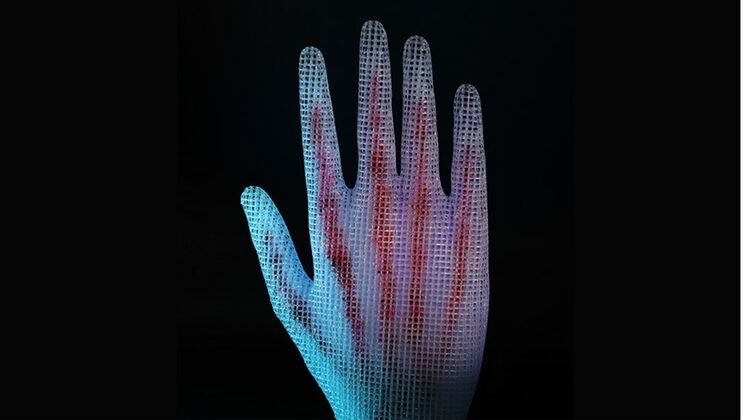
Engineering researchers at the US government’s Lawrence Livermore National Laboratory (LLNL) in California have used capillary action to achieve breakthroughs in multi-material additive manufacturing (3D printing).
The LLNL team printed lattice structures with a series of custom-designed unit cells to selectively absorb fluid materials and precisely direct them into patterns, making it possible to fabricate complex structures with unprintable materials or materials with vastly different properties.
The technique has the potential to help engineers design and optimise structures for properties such as extreme strength-to-weight ratios, large surface areas or precision deformation, the researchers said. ‘By decoupling some of the printing and patterning techniques, you could achieve some complex multi-material structures, and you wouldn’t always have to be able to print the material,’ said Hawi Gemeda, Materials Engineering Division (MED) staff engineer.
‘Essentially, you’re trapping droplets or streams of liquid inside open pores, where they’re not fully enclosed,’ said MED researcher Nik Dudukovic. ‘It allows us to pattern together the soft material the lattice is made from and the infilled liquid, which subsequently solidifies into a stiff material to produce some interesting mechanical properties.’
Achieving full multiscale, multi-material additive manufacturing (AM) would essentially allow for design without limits, according to the research team. Combining multiple materials can produce otherwise unattainable properties, and using AM can produce shapes with special properties such as lattices and gyroids more easily, and at scales that would be impossible with traditional manufacturing.
‘The structures perform differently depending on how you pattern the two materials, so if you understand the relevant physics, you essentially get a playground to explore different mechanical responses,’ said Dudukovic.
Multi-material AM often requires complicated setups or specialised equipment and is limited to materials that can be 3D printed. The team turned to cellular fluidics, which they introduced in 2021, as a potential alternative. Cellular fluidic cells are millimetre-sized 3D-printed structures that can hold and flow liquids and gases in open spaces without leaking thanks to capillary action. At this scale, capillary action causes fluids to flow against gravity in open spaces through a combination of surface tension, adhesion and cohesion, like how water creeps up a paper towel.
Using cellular fluidics, the team designed unit cells – the building blocks of a lattice structure – that were able to confine liquid materials and control the direction of their flow. They printed a lattice scaffold to define a shape and then arranged directional unit cells into patterns so infilled liquid materials only flowed where and how they wanted them to, creating a kind of open 3D mould. Impressively, the first-of-its-kind unit cells worked on the first try.
‘That’s always very rewarding and also very rare,’ said Dudukovic. ‘It confirms that we can control the fluid flow direction in these complicated structures with a good amount of confidence.’
Cellular fluidic patterning maximises the surface area between the infilled fluid and the surrounding atmosphere. This gives the technology seemingly endless potential in processes involving gases and liquids in contact, making it a potential game-changer in sensing and detection, bioreactors, electrochemical systems, carbon capture platforms and more.
To learn what was possible with patterning liquids to produce multi-material solids, the team experimented with different unit cell arrangements, such as 45° rotations or discrete pockets for patterning instead of a skeletal structure. One arrangement included cells that wouldn’t wick up liquid until they were pressed on, which the authors think could provide a path to engineering self-healing structures.
‘What that points to is someday designing a structure that you can fill with polymers that can then be cured in place, which would strengthen the lattice only where it’s directly experiencing large stresses,’ Dudukovic said.
Though the hand pictured above – a 3D-printed lattice scaffold infilled with another polymer to represent the bones – is just a demonstration, the technology could someday be used to make hybrid biomaterials for biomedical applications, as well as complex but lightweight structures for the aerospace industry.
Gemeda hopes to further widen the design space by expanding the technique to other composite systems such as ceramics, metals and biomaterials, and to explore ways to use the unit cells to pattern multiple materials in the same scaffold. She also hopes to influence others.
‘My hope is that it inspires and motivates the AM community to use some of our developments to expand multi-material, multiscale capabilities,’ she said.
The research has been published in Advanced Materials Technologies.


